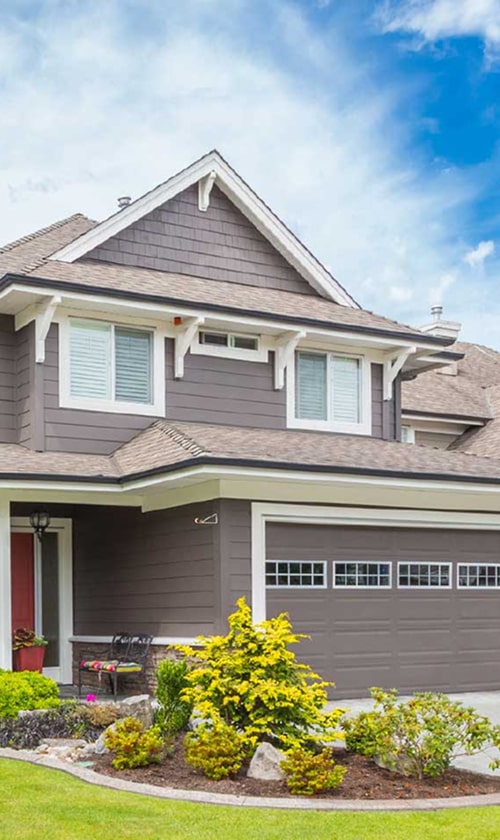Overview of Heat Pump System Types

Heat pumps move heat instead of creating it, making them more efficient than standard heating or cooling systems. Choosing between air, ground, or water as a heat source affects cost, performance, and ease of installation.
Air Source Heat Pumps
Air-source heat pumps take heat from outside air and move it indoors. They use electricity and can heat and cool a building. These systems are usually easier and less expensive to install than other types since they only need an outdoor unit and simple indoor connections.
- Lower upfront cost compared to ground or water source
- Most common choice for homes and smaller buildings
- Good efficiency in mild or moderate climates
However, when temperatures drop below freezing, air-source heat pumps may need backup heating because they lose efficiency. Some models, called hybrid heat pump systems, combine air-source units with gas furnaces to handle colder days.
Ground Source Heat Pumps
Ground-source heat pumps, also called geothermal heat pumps, take heat from the ground. They use pipes buried below the surface to move heat into or out of a building. The ground stays at a steady temperature year-round, so these systems work well in both very hot and very cold areas.
- High efficiency and lower energy bills over time
- Consistent operation regardless of outside weather
- Quiet performance and long system life
The main drawback is the cost and complexity of installation. Digging or drilling for the underground piping takes time and space. These systems are a good choice for new construction or if there’s enough land available for the installation.
Water Source Heat Pumps
Water-source heat pumps work by transferring heat to or from a water source like a pond, lake, or underground well. They can also use closed-loop systems that recirculate water.
- Stable efficiency if a steady water supply is available
- Suitable for large buildings or areas with reliable water sources
- Shared water loops can support multiple units in bigger facilities
These systems need access to water with the right flow and temperature. Installing them may need permits and extra planning if using natural bodies of water. We often see them in schools, offices, and buildings near lakes or rivers, not in standard homes.
Performance and Efficiency Considerations
When we choose a heat pump system, we need to understand how it performs in different situations. We should compare efficiency, climate performance, noise, and compressor technology.
Energy Efficiency Metrics
Energy efficiency tells us how much energy a heat pump uses to provide heating or cooling. The main measurements we look for are SEER (Seasonal Energy Efficiency Ratio), HSPF (Heating Seasonal Performance Factor), and COP (Coefficient of Performance).
- SEER rates cooling efficiency. Higher SEER means less energy is used for cooling.
- HSPF measures heating efficiency for air-source heat pumps, especially in mild climates.
- COP shows heating or cooling output versus energy used. A COP of 3 means we get three units of heat for every unit of electricity.
Choosing a heat pump with high efficiency ratings can lower our energy bills. Models with ENERGY STAR® labels usually meet or exceed these standards.
| Metric | What It Measures | Ideal Range |
|---|---|---|
| SEER | Cooling efficiency | 14-21+ |
| HSPF | Heating efficiency (air) | 8-13+ |
| COP | Overall efficiency (heat/cool) | 2.5-4.5+ |
Climate Suitability and Temperature Fluctuation
Heat pumps work differently depending on the climate. Some systems, like cold climate heat pumps, are designed to work in freezing temperatures. Standard air-source models may lose efficiency below 35°F (1.7°C).
Large temperature swings impact how well a heat pump maintains indoor comfort. In regions with big drops or spikes in temperature, we need equipment that regulates indoor air well and recovers quickly from temperature changes.
Many new systems have features that help them handle cold snaps or heat waves. For homes in cold climates, a heat pump rated for low temperatures is important. Look for models with a backup heat source or specially designed compressors.
Noise Levels
Noise is another key factor when picking a heat pump system. Some units are louder during defrost cycles or when the outdoor compressor runs.
Mini-split systems, especially those with insulated compressors, often operate more quietly. We should check the decibel (dB) ratings before buying, as noise levels below 60 dB are usually considered quiet for outdoor units.
Placing outdoor units away from bedrooms or living areas helps reduce the impact of noise. Some modern heat pumps use sound dampening materials to lower operational noise even further.
Variable-Speed Compressors
Variable-speed compressors can change how fast they run based on heating or cooling demand. Unlike single-speed models, they don’t just turn on or off but adjust their speed to match what our home needs.
This results in:
- Better energy efficiency
- More even indoor temperatures
- Less noise during operation
Rooms stay more comfortable, and the system doesn’t have to work as hard, improving the heat pump’s lifespan. Variable-speed models are especially useful in climates with frequent temperature fluctuation, helping us keep steady comfort with lower energy use.
Installation and Cost Factors
When we plan for a heat pump system, cost, home size, and available incentives all matter. It’s important to consider both the up-front price and extra ways to save, like tax credits.
Installation Costs and Budget Considerations
Heat pump installation cost can vary based on the type and complexity of the system. Air-source heat pumps usually cost less to install, ranging from $4,000 to $8,000 for most homes. Ground-source (geothermal) systems cost more, often between $15,000 and $30,000, due to the need for digging and extra equipment.
Mini-split systems are often less expensive for smaller homes or additions, usually starting at around $2,000. Labor, local rates, and if we need ductwork changes can affect the final price. It’s a good idea to talk to several installers and get written quotes. We should always add about 10% to our budget for unexpected costs.
| Heat Pump Type | Average Installation Cost |
|---|---|
| Air-Source | $4,000 – $8,000 |
| Ground-Source | $15,000 – $30,000 |
| Mini-Split | $2,000+ |
Sizing and Home Requirements
The right size heat pump depends on our home’s square footage, insulation quality, and local climate. If our heat pump is too small, it will struggle in cold or hot weather. If it’s too large, we’ll waste energy and money.
A professional should measure our home and check how much insulation we have. Homes with poor insulation or older windows may need upgrades for the system to work well. Larger homes often need bigger systems or multiple units, which affects the cost and installation steps.
We can ask our installer for a Manual J calculation. This is an industry method to choose the correct size system. It helps us avoid overpaying for equipment we don’t need.
Subsidies and Local Incentives
Government programs can help us lower the cost of a heat pump installation. The federal tax credit can cover up to 30% of the system’s price when certain efficiency standards are met. This applies to both equipment and installation costs.
Many states and cities offer extra subsidies or rebates. Local utility companies may provide cash incentives if we upgrade from old equipment. Before we start, it’s smart to check with local energy offices or our installer. They can guide us through applications to make sure we get every available discount.
Some programs require specific brands, models, or proof of professional installation. Always keep receipts and paperwork to claim these incentives. This can make a big difference to our budget and the final price we pay.
System Features and Application
When we choose a heat pump system, it’s important to look at key features like how the system works with our current setup, what options we have for controlling temperature, and how the system is installed. Each system type comes with its own strengths, especially for HVAC needs in different homes or buildings.
Ducted vs. Ductless Systems
Ducted heat pump systems connect to ducts that carry air throughout a building. These are common in homes that already have ductwork from a furnace or central air system. Ducted systems can deliver strong, even airflow to all rooms and usually keep indoor units hidden. They work especially well if we want a traditional look and full-home heating and cooling.
Ductless systems (like ductless mini-split heat pumps) use indoor air handlers that mount on walls or ceilings in each room. There’s no need for large ducts, making them easier to install in older houses or new spaces without ductwork. We get more flexibility to heat or cool rooms individually, and energy loss through leaking ducts isn’t a problem. For homes with no ducts or with tricky layouts, ductless systems are quicker and less invasive to install.
| Feature | Ducted Systems | Ductless Systems |
|---|---|---|
| Needs Ductwork | Yes | No |
| Zoning | Limited | Excellent |
| Installation | More invasive | Easier/Quicker |
| Appearance | Hidden units | Visible units |
Mini-Split and Multi-Zone Options
Mini-split heat pumps are a type of ductless system with one outdoor compressor and one indoor unit. They work well in single rooms, additions, or small homes. Installation is simple, requiring just a small hole for refrigerant lines, and they’re quick to set up.
Multi-zone mini-split systems link one outdoor unit to two or more indoor units. We can heat or cool different areas with separate controls. This setup is good for homes with rooms that need different temperatures or for families with different comfort needs. Each indoor unit runs independently, so we save energy by heating or cooling only the spaces in use.
Mini-split and multi-zone systems are often quieter than central HVAC systems and provide better room-by-room comfort. We should keep in mind that visible indoor units may not suit everyone’s taste, but the flexibility and efficiency are clear advantages.
Hybrid Systems
Hybrid systems, also called hybrid heat pumps, combine an electric heat pump with a backup gas or oil furnace. These systems switch between electricity and fossil fuels based on outdoor temperature and energy costs. In mild weather, the electric heat pump works efficiently. When it gets very cold, the gas furnace takes over to keep us comfortable.
Hybrid systems are useful in areas with wide temperature swings or expensive electricity. They let us control energy costs and reduce our carbon footprint without sacrificing comfort. For homes with an existing furnace, a hybrid heat pump can use the same ductwork, making installation easier. This type of HVAC system gives flexibility and strong, reliable heating across a broad range of conditions.
Zoning Capabilities
Zoning lets us set different temperatures in different parts of the home. Ductless mini-split systems offer natural zoning because each indoor unit runs on its own thermostat. This is perfect for families who want bedrooms cooler and living spaces warmer. We only use energy in the rooms that are in use.
In ducted systems, zoning is possible by using motorized dampers and controls inside the ductwork. This allows us to divide the home into zones, each with its own temperature setting.
Benefits of zoning in HVAC systems:
- Improved comfort throughout the home
- Reduced energy use
- Custom temperature control for each area
Zoning makes our heat pump or HVAC system more flexible and efficient. It helps lower bills and keeps everyone more comfortable.
Environmental Impact and Maintenance
Heat pump systems affect the environment in several key ways. We must pay attention to energy use, greenhouse gas emissions, upkeep costs, and how well these systems can use renewable energy.
Carbon Footprint and Greenhouse Gas Emissions
Heat pumps can reduce our carbon footprint, especially when compared to furnaces or boilers that burn fossil fuels. They use electricity to move heat, not generate it by burning fuel. This means less direct pollution and lower greenhouse gas emissions.
Air-source heat pumps emit less carbon than oil or gas systems, but the total impact depends on how our electricity is made. If the power comes from coal, emissions are higher. If it’s from solar or wind, the system is much cleaner.
Ground-source (geothermal) heat pumps are even more efficient. They use stable ground temperatures, so they need less energy for the same amount of heating or cooling. This lowers emissions even further if powered by clean electricity.
It’s important to note that all heat pump systems use refrigerants, which can be harmful if they leak. Most new systems use refrigerants with a lower Global Warming Potential (GWP) than older units, but safe handling and proper servicing are still important for minimizing environmental impact.
Renewable Energy Integration
Heat pumps work especially well with renewable energy. If our home has solar panels or gets electricity from wind, heating and cooling can have almost no carbon emissions.
Some systems are designed to adjust their operation based on when renewable energy is available or cheapest. This pairing can help us save money and reduce stress on the power grid.
Water- and ground-source heat pumps, in particular, pair well with renewable energy because they run more steadily throughout the year. Key benefits of renewable integration:
- Lower operating costs
- Reduced greenhouse gas emissions
- Improved environmental friendliness
Using renewable-powered heat pumps can make our home nearly zero-emission for heating and cooling.
Maintenance and Ongoing Costs
Heat pumps need regular maintenance for the best performance and longest life. We should check, clean, or replace filters every few months and have a professional inspect the system once a year.
Regular servicing lowers electricity use and reduces the risk of leaks from refrigerant. By following the manufacturer’s guidelines, we avoid breakdowns and help cut yearly energy costs.
Maintenance costs for air-source heat pumps are usually lower than those for oil or gas boilers. However, ground-source heat pumps may cost more at first but often last longer with their underground coils.
Ongoing costs include electricity, filter replacements, and service visits. Starting with a professional installation helps prevent problems and costly repairs later. Proper care ensures efficient use of energy and a smaller environmental impact.




